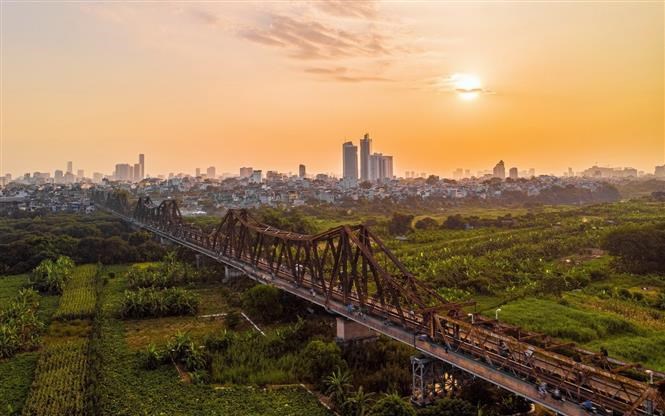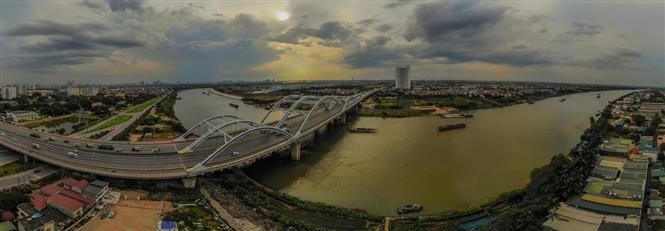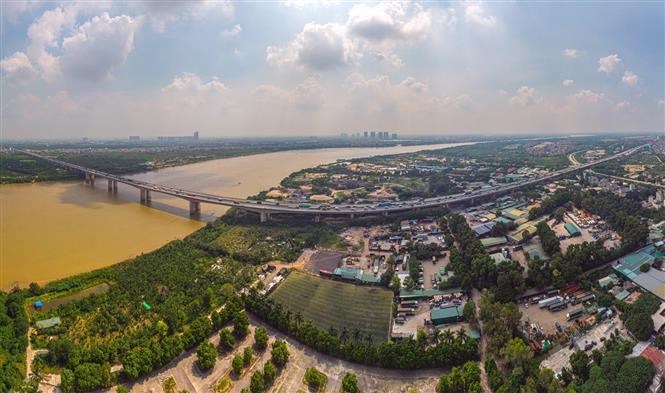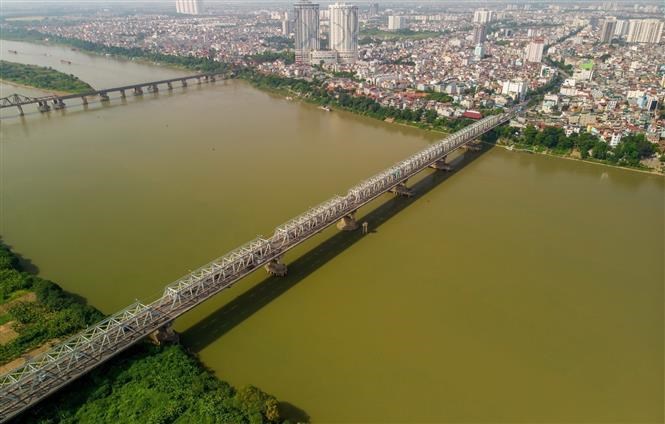
Hanoi has become more modernized in recent years with an increasing number of bridges spanning Hong (Red) river, playing an important role in facilitating the city's transport.
Hanoi has become more modernized in recent years with an increasing number of bridges spanning Hong (Red) river, playing an important role in facilitating the city’s transport.
 |
| The icon Long Bien bridge, designed by French architect Gustave Eiffel, was built between 1899 and 1902 and opened in 1903. For over 100 years, the bridge has seen many changes, and has become a symbol of Vietnam's history. |
 |
| Vinh Tuy bridge, one of seven bridges in Hanoi crossing the Red River, was inaugurated in 2010. Construction of the bridge started on February 3, 2005 with a total investment of nearly 3.6 trillion in the first phase. The 9.5km long gateway has helped ease traffic pressure on Chuong Duong and Long Bien bridges. |
 |
| The 1.14km long and 55m wide Dong Tru bridge spans the Duong river and links Long Bien district and the suburban district of Dong Anh. It is recognised as the widest bridge in Vietnam. |
 |
| Nhat Tan bridge is a cable-stayed bridge crossing the Red River in Hanoi, inaugurated on January 4, 2015. It forms part of a new six-lane highway linking Hanoi and Noi Bai International Airport. The project is a manisfestation of the Vietnam-Japan cooperation relations. |
 |
| Thanh Tri bridge (completed 2008) is the largest one spanning Red River, connecting Hoang Mai and Long Bien districts. It is one of the longest and widest reinforced concrete bridges in Vietnam. The bridge is over 33.1m wide and has six lanes connecting eastern Hanoi and National Highway 1A. |
 |
| Built between 1983 and 1986, Chuong Duong bridge was the first big bridge in Vietnam to be designed and built by local engineers without technical assistance from foreign experts. The 1,230m long bridge was built using materials left over from the construction of Thang Long bridge, helping to ease the traffic burden on Long Bien Bridge. |
 |
| The icon Long Bien bridge, designed by French architect Gustave Eiffel, was built between 1899 and 1902 and opened in 1903. For over 100 years, the bridge has seen many changes, and has become a symbol of Vietnam's history. |
(Source: VNA)





